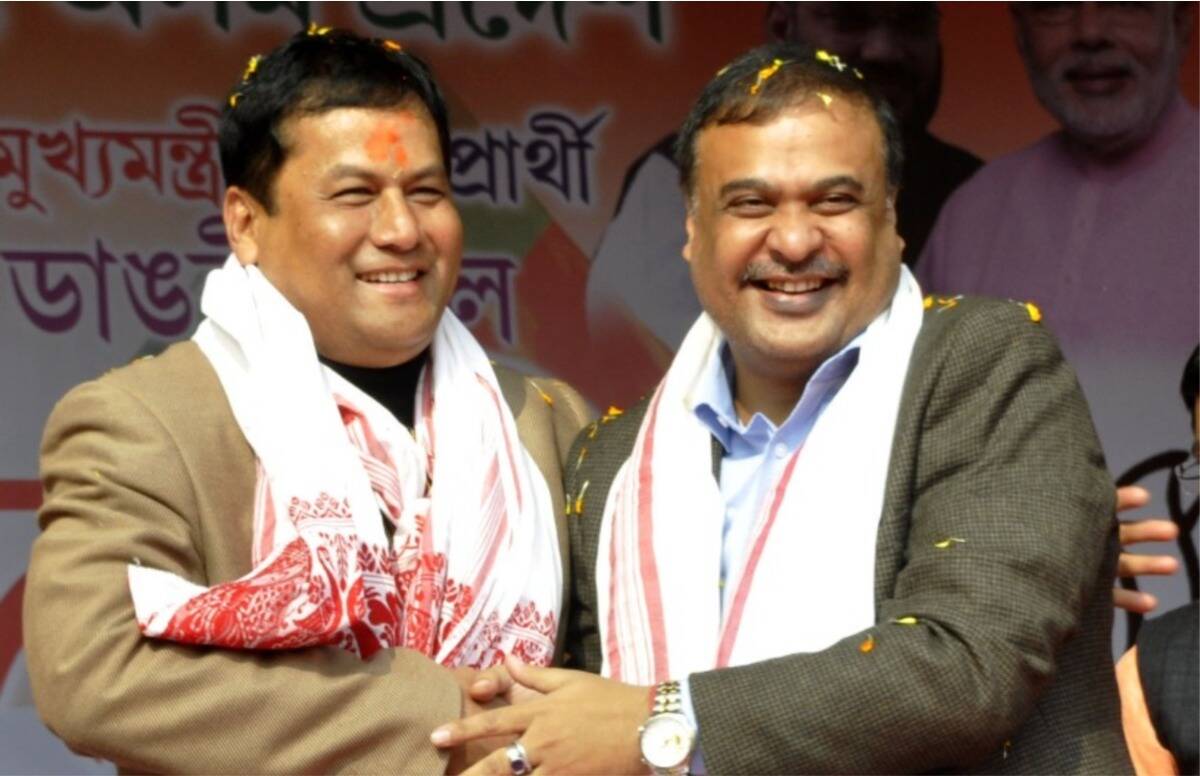Former Assam Chief Minister (CM) Sarbananda Sonowal’s the fate of becoming CM for the second term was sealed when the BJP did not announce a Chief Ministerial candidate before the 2021 State general elections. This had created speculation that he would not become the CM for the second term if the party won in the elections.
At the same time, the party threw more weight around the versatile BJP man, a literally most powerful in the Sonowal government, Himanta Biswa Sarma, to lead the party including the distribution of tickets for the assembly elections in the State. Around 80% of BJP candidates who have won in the 2021 Assam assembly elections are Sarma loyalists, a sure shot for CM’s chair he has been dreaming of.
A large number of political pundits and mainland media have given credit to Sarma for the party’s resounding victory in the State’s 2016 and 2021 elections. But the fact is the BJP could win the State’s 2016 election mainly because of the anti-incumbency factor of the Congress regime of Tarun Gogoi who ruled the State for three consecutive terms since 2001.
Interestingly, Sarma, a strong Congressman in the then Congress government in the State rebelled against Gogoi and tried to overthrow him as the CM. He defected to the BJP in 2015.
It would be wrong to say that Sarma was the architect of BJP’s resounding victory in the 2016 State election. He knew he could not become CM in 2016 as he was not very close to the BJP leaders whether in the State or at the Center, whereas Sonowal, already in the good book of Prime Minister Narendra Modi was seen as a promising politician by the people of NE. But when Sonowal formed his government in 2016, Sarma was appointed as his number-two cabinet minister with lucrative portfolios including Finance. This became the turning point for Sarma to create his political ground where he would land safely as head of the next BJP government in 2021 and this has been seen by the party leaders in the State and at the Center, and many have known it.
Therefore, the mainland media and many political pundits giving credit to Sarma for the party’s growth in the NE and formations of party governments in Manipur, Nagaland, Arunachal Pradesh, and Tripura is farfetched. For example, Manipur went to the Assembly poll in 2017 when the people including the BJP people out there hardly knew about him. BJP won 21 seats while the ruling Congress won 28 seats, short of 3 for a simple majority to form the government. So the BJP with other non-Congress MLAs including 4 from the Naga People’s Front (NPF) and the lone Independent formed the government headed by N Biren Singh. Here too, the Congress under Manipuri strongman O Ibobi Singh faced the anti-incumbency wave after ruling the State for three consecutive terms since 2002. The defeat of Congress governments of Gogoi and Singh in 2016 and 2017 respectively are similar as their both regimes lost to the BJP and the loss was never because of Sarma, a nondescript BJP man then.
Similarly, Sarma had hardly played any role in the BJP’s rising in the 2018 Nagaland Assembly election. It was the smart and timely move of then Nagaland’s lone Member of Parliament (MP Lok Sabha), Neiphiu Rio, by striking a deal for a seat-sharing formula with the BJP. The newly floated Nationalist Democratic Progressive Party (NDPP) and the BJP to share seats – 40:20, and this is a masterstroke of Rio. The ruling NPF headed by TR Zeliang won only 26 seats, 5 short of a simple majority to form the government. The NDPP won 18 seats, the BJP won 12 seats, and the NDPP-BJP-led coalition with other non-NPF MLAs including the lone Independent formed the government. In fact, the BJP won seven seats in the 2003 Nagaland Assembly election and became the second-largest party in the NPF-led Democratic Alliance of Nagaland (DAN) government in 2003 ending the Congress regime of SC Jamir. Since then, the BJP kept wining Assembly elections held in 2008, 2013, and 2018 and they are always part of the ruling coalition.
Even in Tripura, the BJP-Indigenous Peoples Front of Tripura (IPFT) coalition won 43 seats in the 2018 Assembly election due to the anti-incumbency factor of the CPI (M) government headed by Manik Sarkar who had been ruling the state for nearly 25 years since 1998.
Mizoram is a non-BJP government while the National People’s Party (NPP)-led coalition with two BJP MLAs formed the government in Meghalaya. The BJP’s landslide victory in the 2019 Arunachal Assembly election was largely because of the leaders like Pema Khandu, Kiren Rijiju, and not because of Sarma.
One must know that the BJP is at the helms of affairs at the Center headed by Modi when the Assembly elections have been conducted in Assam, Arunachal Pradesh, Manipur, Meghalaya, Mizoram, Nagaland and Tripura. Modi himself attended a number of election rallies held in these States.
It is, however, undeniable that Sarma was the architect of the BJP’s resounding victory in the 2021 Assam assembly election and as already stated he exploited the unprecedented clout he had ever since he became a part of the Sonowal government in 2016, and started hitting the ground running.
The flip side of the party is that the wings of the new CM of Assam, Himanta Biswa Sarma, will not flap to fly as before. He has many issues to look into and the Congress-led grand alliance is still a formidable force with 50 MLAs in the State. His popularity is likely to go down in the other States of NE as he starts attending to his State issues along with the Central government’s grappling with the health crisis. And Sonowal is still seen as a clean BJP leader.












